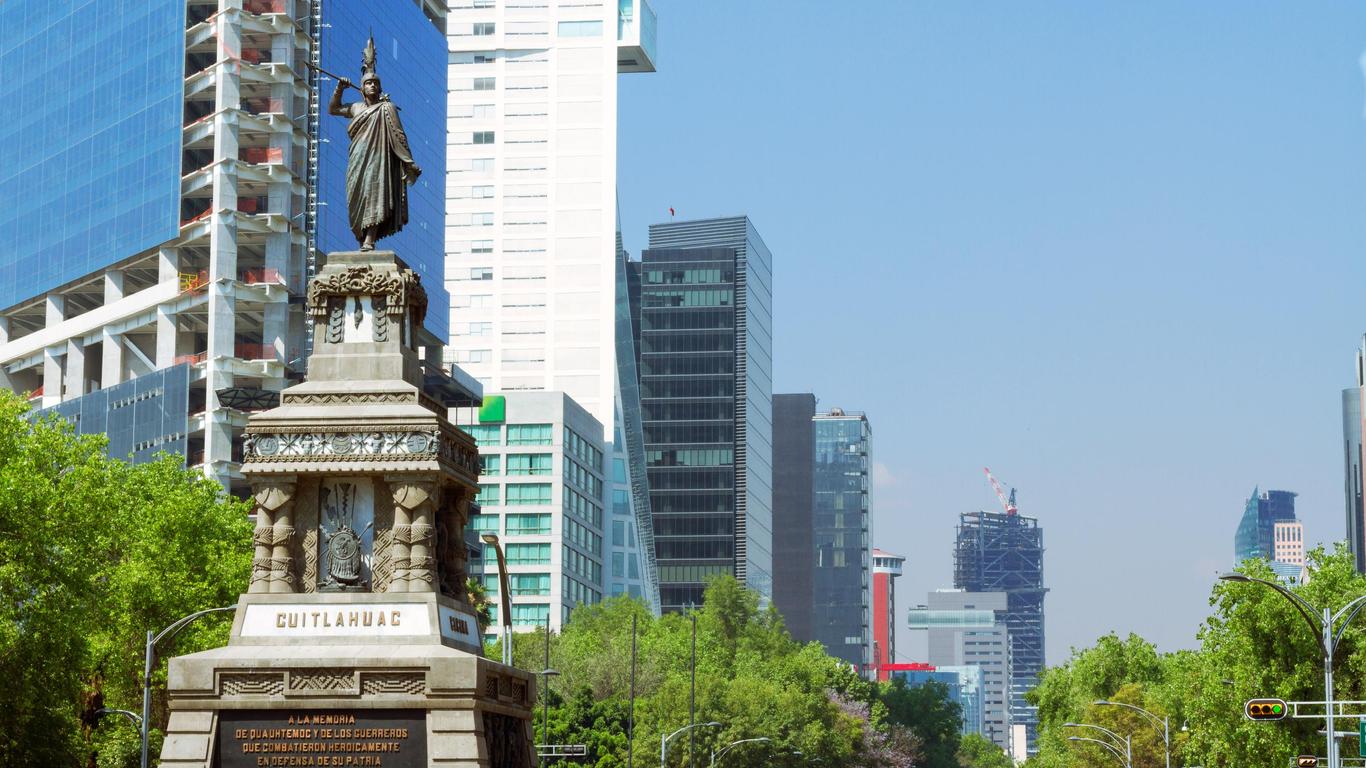One of the Federal District of Mexico City’s 16 boroughs, Cuauhtémoc is considered its historical and cultural heart. It sprawls across what was the entire extent of Mexico City as recently as the 1920s, with many of the district’s major sights, including its famed Zona Rosa.
The Zocalo square lies at the heart of Cuauhtémoc and is home to the Templo Mayor Aztec ruins, the elaborate National Palace of Mexico and the grandiose Metropolitan Cathedral. To the north lies the Church of Santo Domingo which was established as the first convent in New Spain, together with the San Ildefonso College which is considered the birthplace of the Mexican muralist movement. The Museo Nacional de Arte is housed in a neoclassical building to the west and covers the history of Mexican art from the late pre-Hispanic period, not far from the lavish Palacio de Correos de Mexico, designed in an elaborate Italian Renaissance style. The leafy walking trails of Alameda Park are also found here, alongside the Museo Mural Diego Rivera which celebrates one of Mexico’s most-loved artists. The José Luis Cuevas Museum is situated just to the east of the Zocalo in an early 17th century convent and is now home to a museum dedicated to contemporary Latin American art, while the nearby La Santisima Church is also of note for its decadent facade, built in the 18th century for the adjoining hospital. In addition to its historic roots, Cuauhtémoc is home to prominent modern skyscrapers, including the Torre Mayor which soars 225 metres above the borough, and is an important business hub as the location of the Mexican Stock Exchange.
Cuauhtémoc is well served by metro subway services, trolleybus lines and public bus routes which connect it to the surrounding boroughs of the Federal District of Mexico City. It is also home to the southern terminal of the Tren Suburbano railway which extends north to the city of Cuautitlán.
The area on which Cuauhtémoc now stands was the site of the historic Aztec city of Tenochtitlan, which centred around the Templo Mayor. Following Spanish occupation in 1521, many of the Aztec buildings were destroyed and replaced by European-style architecture as it emerged as the centre of New Spain.





